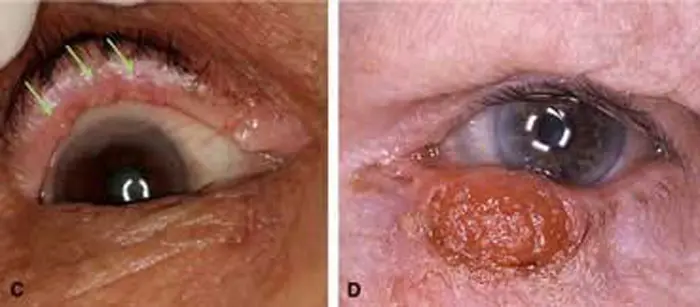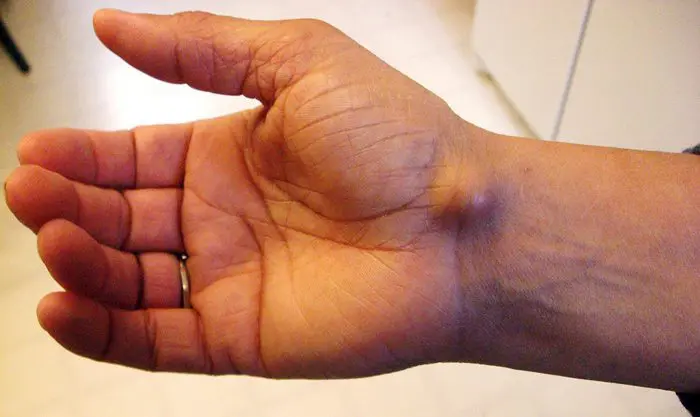Sebaceous Carcinoma
Skin Conditions
Sebaceous carcinomas are very rare and aggressive cutaneous tumors with a variable clinical presentation most commonly occurring within the ocular adnexa of the elderly. They account for less than 5.5% of eyelid malignancies and thus are often mistaken for a recurrent chalazion, chronic blepharoconjunctivitis, and a variety of other lesions.

They histologically resemble squamous or basal cell carcinomas, which can further delay diagnosis. Frequency increases with age – most patients with this disease are age 60 or older. However, this malignancy can be found in much younger patients – especially those with a history of prior radiation therapy to the site. Other reported risk factors include female sex and Asian or Pacific Islander ethnicity, though some reports deny these correlations.
Sebaceous carcinomas are aggressive cancers that exhibit pagetoid growth with a high rate of metastasis and are associated with a high mortality, likely because diagnosis is often delayed for months or years due to its varied presentation. Furthermore, re-occurrence is not uncommon. Most sebaceous carcinomas occur on the skin of the face – most commonly on an eyelid though they may occur anywhere on the skin. Symptoms of sebaceous carcinomas include conjunctivitis, madarosis, loss of cilia on the affected lid, thickening of the eyelid, and eyelid mass.
The cause of sebaceous carcinomas is unknown, though some afflicted patients have a history of prior radiation therapy at the site of the tumor or retinoblastoma. It can be associated with Muir-Torre syndrome – a rare autosomal dominant genetic syndrome, revealing that a patient’s genetic profile plays a role in the disease process. Treatments for this malignancy are primarily surgical, using wide excision or Mohs surgery, though radiation therapy can be used as an alternative.

















